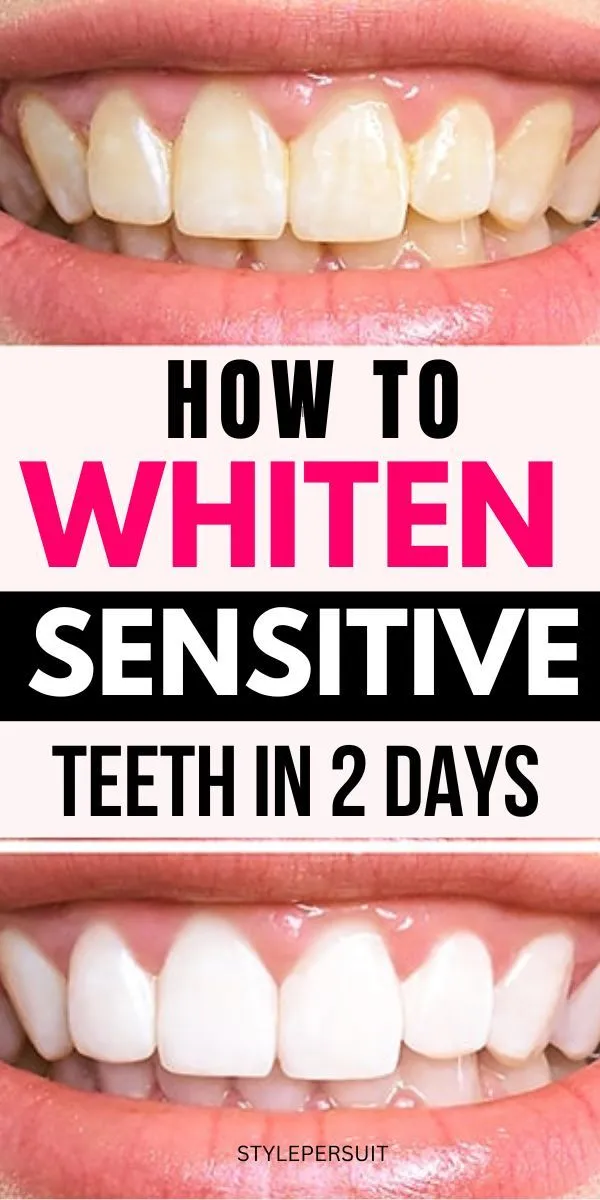The Truth About Teeth Whitening Sensitivity
Teeth whitening is a popular cosmetic procedure, promising a brighter, more confident smile. However, a common side effect often dampens the enthusiasm sensitivity. This article delves into the often-overlooked aspects of teeth whitening sensitivity, providing a comprehensive guide to understanding, managing, and mitigating this issue. We will uncover seven hidden facts, exploring the science behind the sensitivity, the products involved, and practical steps to minimize discomfort. This guide aims to equip you with the knowledge needed to navigate the world of teeth whitening effectively and safely, ensuring you achieve the desired results without unnecessary pain or complications. The goal is to empower you with informed choices, allowing you to make the most of your whitening experience while protecting your oral health. Let’s explore the science and secrets behind a brighter smile.
Why Does Teeth Whitening Cause Sensitivity?
Understanding the root causes of teeth whitening sensitivity is crucial for effective management. Several factors contribute to this discomfort, primarily related to the chemical processes involved and the individual characteristics of your teeth. The active ingredients in whitening products, such as hydrogen peroxide or carbamide peroxide, work by breaking down stains on the tooth surface. However, this process can also affect the tooth’s structure, leading to sensitivity. A deeper understanding of these mechanisms will allow you to make informed decisions. In this guide, we will explore how these agents interact with the tooth’s enamel and dentin, the impact on the tooth’s structure, and how to avoid complications.
The Chemistry of Whitening
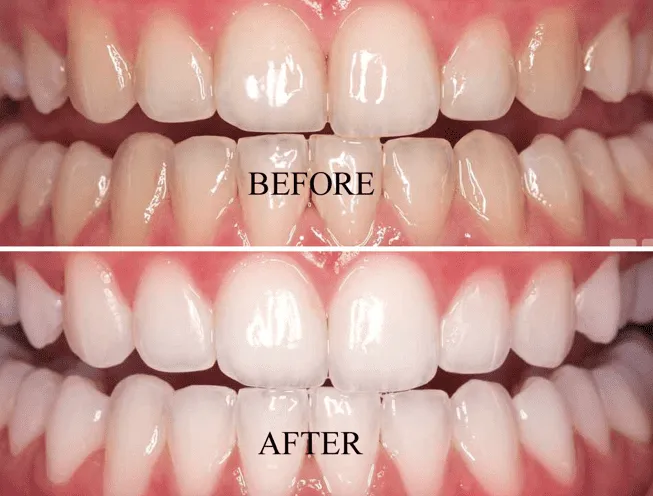
Teeth whitening products utilize chemical reactions to achieve their brightening effects. The main active ingredients, hydrogen peroxide and carbamide peroxide, release oxygen molecules that penetrate the enamel and dentin. These oxygen molecules react with the stain molecules, breaking them down and making them less visible. This process is effective but can also affect the tooth’s structure. The chemical reactions can temporarily dehydrate the tooth and open the pores, increasing sensitivity. This understanding is key to managing the process and minimizing discomfort. The concentration of the whitening agent and the duration of its contact with the teeth directly influence the degree of sensitivity experienced. In this section, we will delve into the specifics of this chemical process.
How Whitening Agents Work
Whitening agents work at the molecular level to dissolve the stains that discolor teeth. Hydrogen peroxide and carbamide peroxide are the workhorses of the industry. Carbamide peroxide breaks down into hydrogen peroxide, which then releases oxygen. This oxygen penetrates the enamel and dentin, targeting and breaking down the stain molecules. The efficiency of the process depends on the concentration of the whitening agent and the contact time. Higher concentrations and longer contact times typically lead to more dramatic whitening results, but also increase the likelihood of sensitivity. Understanding the mechanics will help you make informed choices and control the process effectively, minimizing the risk of discomfort and maximizing the benefits.
The Impact on Tooth Structure
While effective, teeth whitening can temporarily affect the tooth’s structure. The whitening agents can dehydrate the teeth, making them more porous. This can lead to sensitivity, as the exposed dentinal tubules, which contain nerve endings, become more vulnerable. The enamel, the protective outer layer, can also be affected, potentially causing mineral loss and increased permeability. This explains why some people experience sharper and quicker sensitivity than others. It’s essential to understand these effects to make informed decisions and minimize the risk of complications. Careful management and the use of desensitizing products can help mitigate these effects, ensuring a more comfortable whitening experience and protecting your tooth structure from potential damage.
Hidden Fact 1: Understand the Root Causes
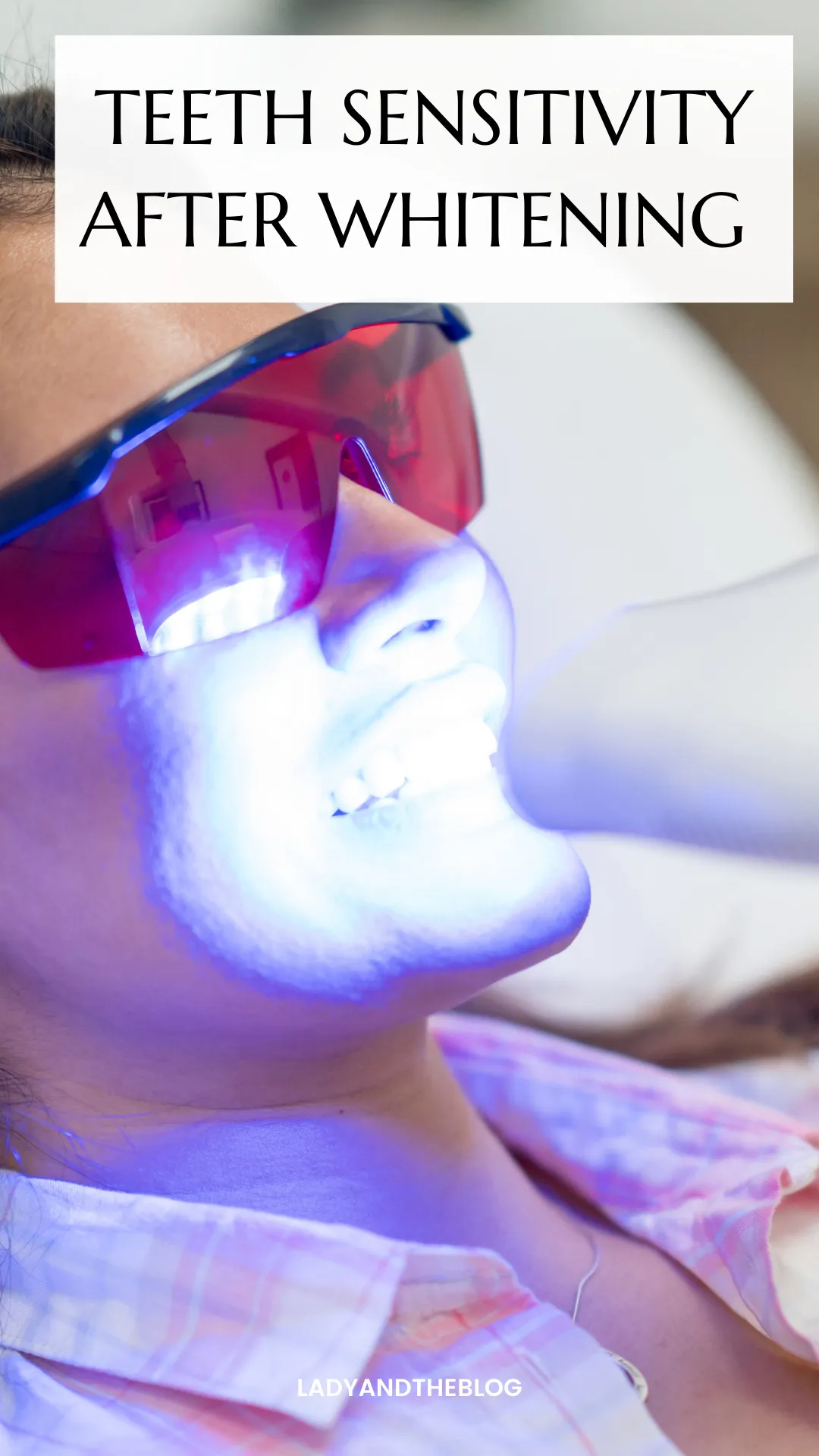
The foundation of managing teeth whitening sensitivity lies in understanding its root causes. Sensitivity is not a uniform experience; it varies depending on individual factors and the whitening methods employed. Enamel thinning, gum recession, and pre-existing sensitivity are among the primary contributors. Recognizing these elements can help you make the right choices regarding the process. It is vital to assess your situation and take the necessary steps to mitigate the risk. Let’s explore each of these in more detail so you can create a strategy that minimizes potential discomfort and maximizes positive outcomes.
Enamel Thinning
Enamel is the hardest substance in the human body and acts as a protective shield for the teeth. When enamel is thin, the underlying dentin, which contains tubules leading to the nerve, becomes more exposed. Whitening agents can penetrate these tubules more easily, leading to increased sensitivity. This thinning can be caused by various factors, including aggressive brushing, acidic foods and drinks, and genetic predisposition. Individuals with naturally thin enamel or those who have undergone treatments that compromise enamel integrity are at a higher risk of experiencing sensitivity during teeth whitening. Before starting any whitening procedure, assess your enamel health. Consult your dentist to evaluate the thickness and make recommendations. Taking care of your enamel will ensure a successful procedure.
Gum Recession
Gum recession occurs when the gum tissue pulls back, exposing the root surfaces of the teeth. These root surfaces are not covered by enamel and are therefore more susceptible to sensitivity. When whitening agents come into contact with the exposed root surfaces, they can quickly irritate the nerve endings, causing pain. Gum recession can be caused by aggressive brushing, periodontal disease, or genetics. If you have receding gums, you are likely to experience heightened sensitivity. Consider addressing gum recession before undergoing teeth whitening. Your dentist can recommend treatments to manage gum recession and protect the exposed root surfaces, improving the overall outcome.
Pre-existing Sensitivity
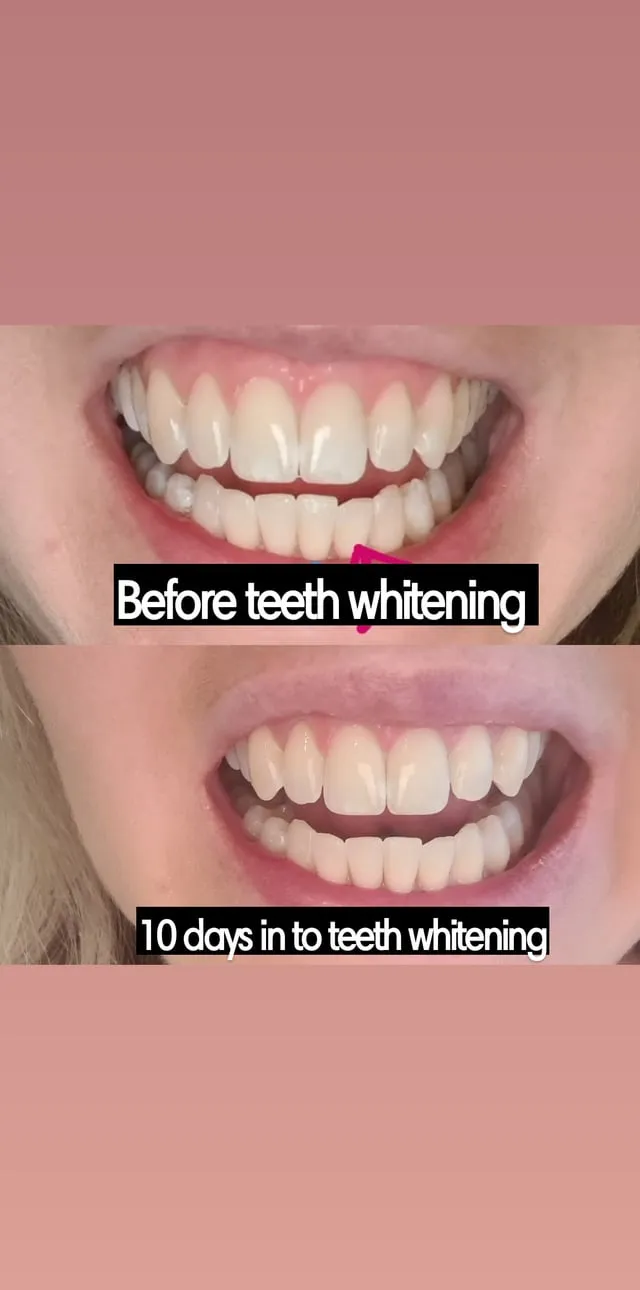
Individuals with pre-existing sensitivity are more likely to experience discomfort during teeth whitening. This existing sensitivity can be due to a variety of factors, including dental work, cavities, or other oral health conditions. Whitening agents can exacerbate these sensitivities, making the experience more unpleasant. If you already have sensitive teeth, it’s crucial to consult with your dentist before starting any whitening procedure. Your dentist can assess your sensitivity level and recommend a personalized plan. This may include using desensitizing toothpaste before, during, and after whitening. They may also suggest adjusting the whitening method, such as using a lower concentration of the whitening agent or reducing the application time. Taking these precautions will help you reduce potential discomfort.
Hidden Fact 2: The Role of Whitening Products
The choice of whitening products plays a significant role in determining the level of sensitivity experienced. The primary factors include the type of whitening agent, its concentration, and the method of application. Understanding how each of these factors affects the sensitivity level will help you make an informed decision about what whitening products to use. Choosing the right product is one of the most important steps for achieving desired results while minimizing discomfort. Each product type presents unique benefits and potential drawbacks, so selecting the one that best fits your needs and tolerances will significantly improve your experience. Let’s consider the factors that influence the choices to ensure a successful and less sensitive whitening journey.
Hydrogen Peroxide vs. Carbamide Peroxide
Hydrogen peroxide and carbamide peroxide are the two primary whitening agents. Hydrogen peroxide is the active agent in many professional whitening treatments and some over-the-counter products. Carbamide peroxide, on the other hand, is often used in at-home whitening kits, where it breaks down into hydrogen peroxide. Generally, hydrogen peroxide works faster but can cause more sensitivity due to its higher concentration in some formulations. Carbamide peroxide releases hydrogen peroxide over time, which may lead to less initial sensitivity but a longer treatment duration. Choosing between these agents depends on individual tolerance and the desired speed of results. Consulting with your dentist can help determine the most suitable agent for your specific needs.
Concentration Levels
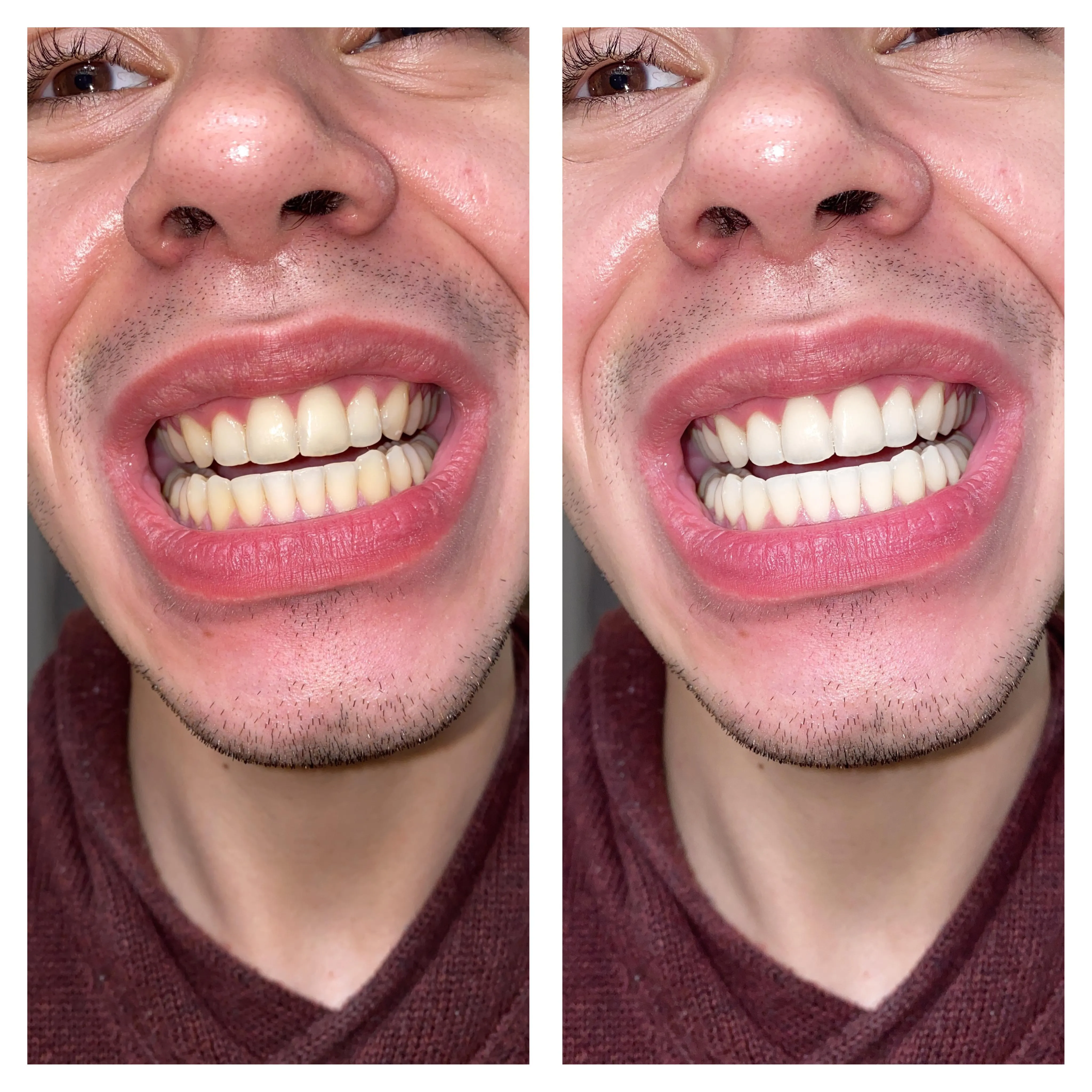
The concentration of the whitening agent directly affects both the whitening power and the likelihood of sensitivity. Higher concentrations typically lead to faster and more dramatic whitening results but also increase the chances of sensitivity. Over-the-counter products generally contain lower concentrations of hydrogen peroxide (3-10%) or carbamide peroxide (10-22%). Professional treatments performed by a dentist may use concentrations up to 40%. If you have sensitive teeth, starting with a lower concentration product is advisable. You can gradually increase the concentration if needed. Always follow the product instructions, and consult with your dentist if you have concerns. Adjusting the concentration can help balance effectiveness and comfort, optimizing your whitening experience.
Application Methods
The method of applying whitening products also impacts the potential for sensitivity. There are several application methods, including custom-fitted trays, strips, toothpastes, and in-office treatments. Custom trays, often used with at-home whitening kits, offer a more controlled application, reducing the risk of the whitening agent coming into contact with soft tissues and causing sensitivity. Whitening strips are easy to use but may not always provide consistent coverage. Toothpastes containing whitening agents have a lower concentration and are used daily, providing a gentler approach. In-office treatments, performed by a dentist, typically involve higher concentrations and may be followed by desensitizing treatments. Choosing the right method depends on your needs, sensitivity level, and lifestyle. Selecting the right method will increase the success rate.
Hidden Fact 3: Addressing the Problem Before Whitening
Preparing for teeth whitening is just as important as the whitening process itself. Several proactive steps can be taken before starting a whitening treatment to minimize sensitivity and optimize results. This includes visiting your dentist for a check-up and professional cleaning, as well as using sensitivity toothpaste. Addressing potential issues beforehand will make your teeth whitening experience much better. By taking these steps, you are not just preparing your teeth for the procedure; you are also ensuring their overall health and long-term well-being. Prevention is often better than treatment, and in this case, it significantly reduces the chances of experiencing uncomfortable side effects.
Dental Check-ups
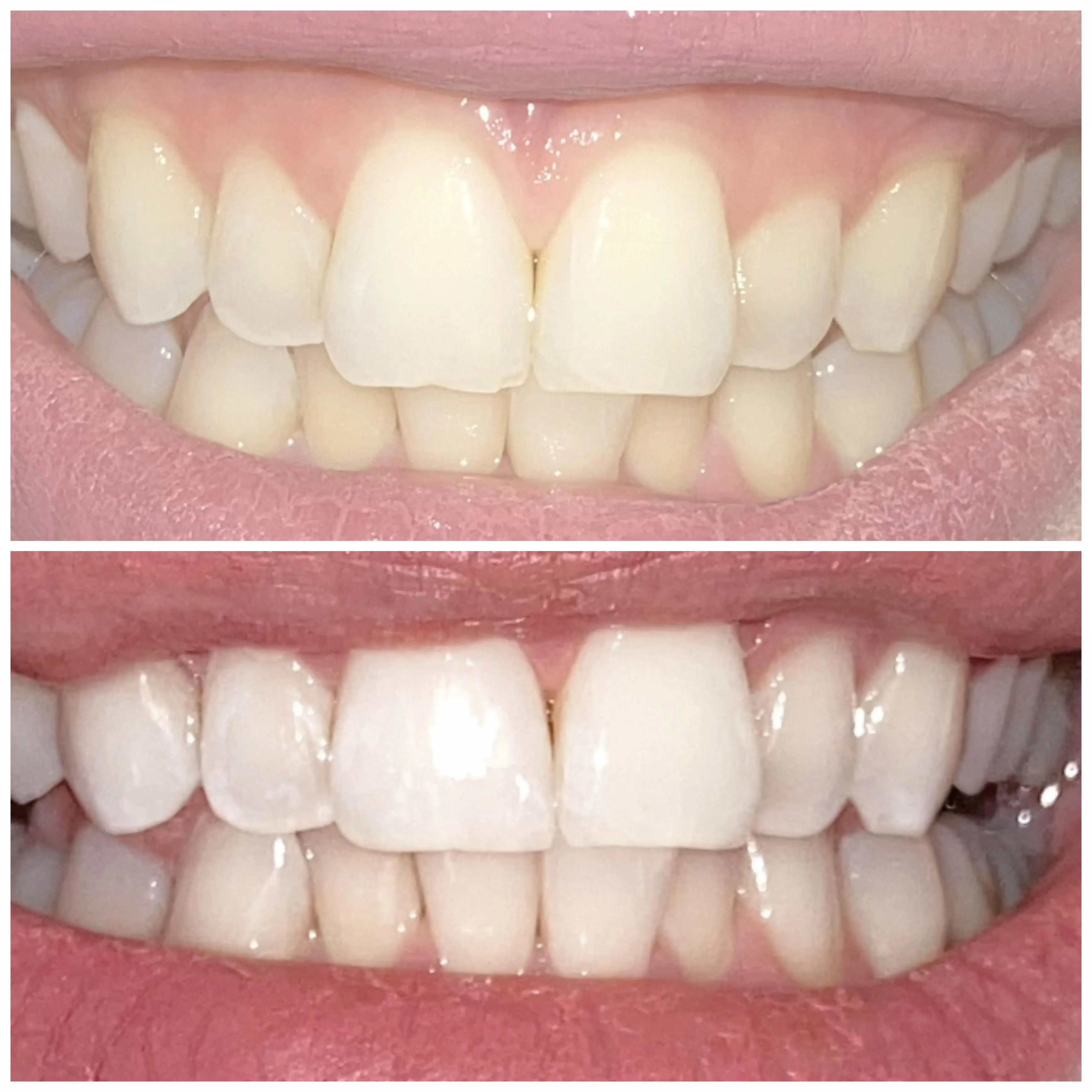
A comprehensive dental check-up is a critical first step before any teeth whitening procedure. Your dentist will assess your oral health, identify any existing issues such as cavities, gum disease, or enamel erosion, and provide the necessary treatment. Addressing these issues before whitening is essential because whitening agents can exacerbate existing dental problems and increase sensitivity. During the check-up, your dentist will also evaluate your overall oral health and determine if you are a suitable candidate for teeth whitening. If you have cavities, they must be filled before whitening to prevent the whitening agent from penetrating the tooth and causing further irritation. Regular check-ups ensure that your teeth are in their best condition, maximizing the effectiveness and safety of the whitening procedure.
Professional Cleanings
Professional dental cleanings are another essential preparation step. Cleanings remove plaque, tartar, and surface stains, allowing the whitening agent to penetrate the enamel more effectively. This is particularly helpful because the whitening agent can work directly on the tooth surface. Professional cleanings ensure a more uniform whitening result. Removing these build-ups will help the whitening agent interact with the enamel. Additionally, your dentist or hygienist can assess your teeth for any early signs of sensitivity or other issues that may need to be addressed before whitening. Regular cleanings also promote better oral hygiene, supporting the long-term health and brightness of your smile.
Sensitivity Toothpaste
Using sensitivity toothpaste before starting the teeth whitening process can significantly reduce the likelihood of experiencing sensitivity. Sensitivity toothpastes contain ingredients like potassium nitrate or stannous fluoride, which help to block the tubules that lead to the tooth’s nerve, reducing the sensation of pain. Starting to use sensitivity toothpaste a few weeks before whitening allows the active ingredients to build up and protect your teeth. This creates a barrier that will lessen the effects of whitening agents. Continued use of sensitivity toothpaste during and after whitening can provide ongoing relief. To maximize the effectiveness, follow the instructions on the toothpaste package. Consistency is key, as regular use is essential for achieving the best results.
Hidden Fact 4: During the Whitening Process
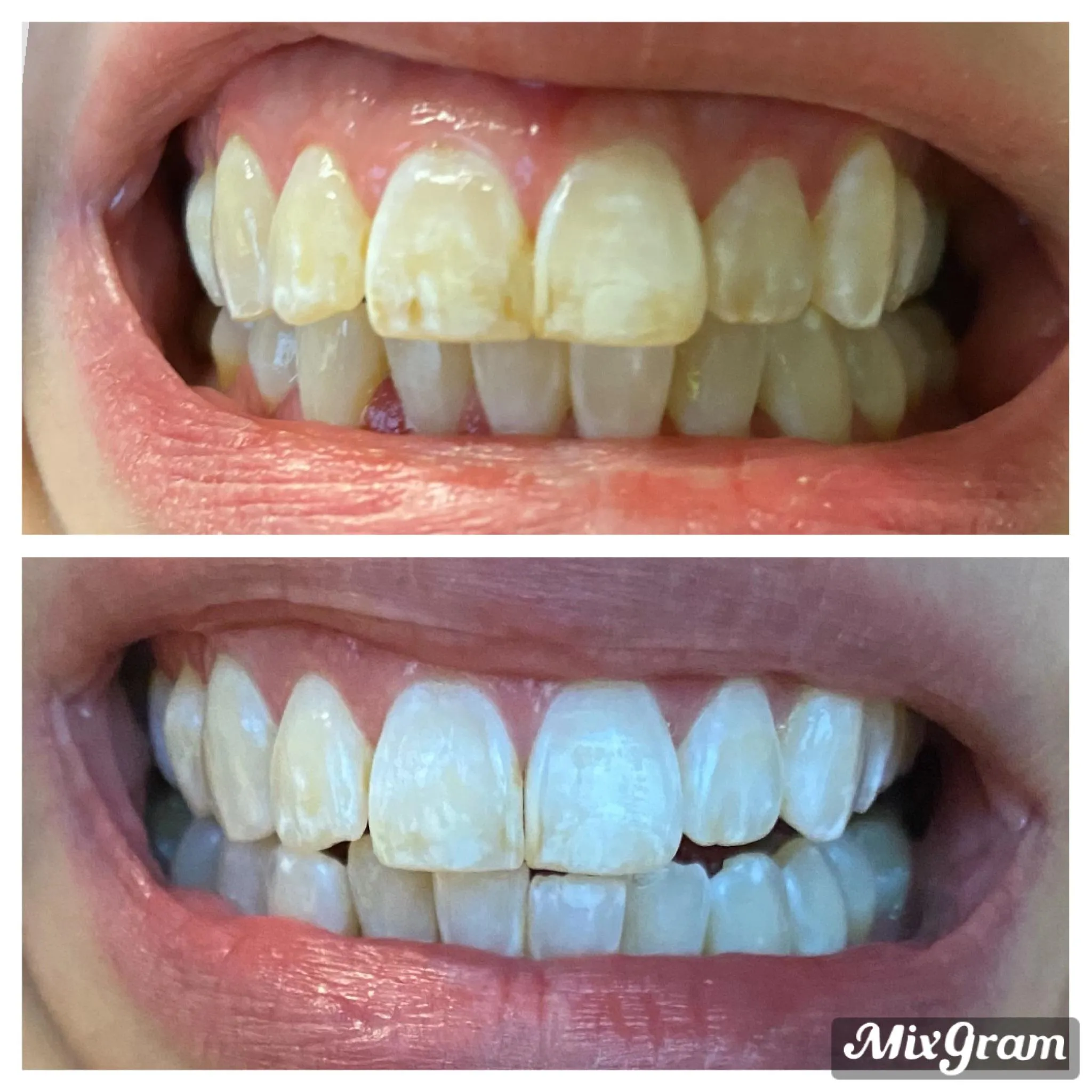
Managing sensitivity during the whitening process is key to a comfortable experience. Several strategies can be employed to minimize discomfort, including using desensitizing products, carefully managing the application of the whitening agent, and maintaining proper hydration and diet. Paying attention to these factors will help you navigate the whitening process more effectively. Taking proactive steps will give you more control over your comfort and outcomes. Remember, a well-planned approach will make the process far more manageable.
Use of Desensitizing Products
Desensitizing products are specifically designed to reduce tooth sensitivity. They work by blocking the nerve endings in the teeth or by creating a protective layer over the enamel. Common desensitizing products include toothpaste with potassium nitrate or stannous fluoride, fluoride treatments, and gels containing calcium phosphate. Use these products as directed by your dentist or the product instructions. Your dentist may recommend a fluoride treatment, which can strengthen the enamel and reduce sensitivity. Applying these products before and after whitening can significantly decrease discomfort. Using desensitizing products ensures a much smoother whitening process.
Managing the Application
Carefully managing the application of the whitening agent can minimize sensitivity. If using at-home whitening kits, follow the instructions precisely. Avoid overfilling the trays and ensure the whitening agent does not come into contact with your gums, as this can cause irritation. If you experience any significant discomfort, remove the trays immediately and rinse your mouth thoroughly. Consider reducing the application time or frequency. For professional treatments, communicate any discomfort to your dentist. They can adjust the concentration of the whitening agent or use desensitizing treatments. Proper application and communication with your dental professional are critical in minimizing sensitivity during teeth whitening.
Hydration and Diet
Maintaining proper hydration and following a specific diet during the whitening process can also help manage sensitivity. Staying hydrated helps keep your teeth from becoming dehydrated, which can increase sensitivity. Drink plenty of water throughout the day. Avoid foods and drinks that can stain your teeth, such as coffee, tea, red wine, and dark-colored berries. These can not only stain the teeth but can also exacerbate sensitivity. Consider incorporating a diet rich in calcium and phosphorus, which helps remineralize the enamel. Following these dietary recommendations will contribute to a more comfortable whitening experience and help to protect the teeth during the process. Taking care of your overall health will make the experience more worthwhile.
Hidden Fact 5: Post-Whitening Care
Proper post-whitening care is crucial for maintaining your results and minimizing long-term sensitivity. This includes maintaining good oral hygiene, avoiding staining foods and drinks, and implementing long-term sensitivity management strategies. These steps ensure the longevity of your bright smile and promote overall oral health. By taking care of your teeth after whitening, you are investing in a healthy mouth for years to come. Developing good habits now will help you to prevent a relapse of sensitivity or a reduction in the whitening effects. It’s a worthwhile effort that will help you maintain a healthy smile.
Maintaining Oral Hygiene
Continuing to maintain good oral hygiene is paramount after teeth whitening. This includes brushing your teeth at least twice a day with a soft-bristled toothbrush and flossing daily to remove plaque and food particles. Gently brushing prevents enamel damage, and proper flossing helps keep the gums healthy, reducing the risk of gum recession, which can increase sensitivity. Regular dental check-ups and professional cleanings are also vital for maintaining oral health. These visits allow your dentist to monitor your teeth for any signs of sensitivity or other issues. Consistent oral hygiene ensures your teeth remain healthy, strong, and beautifully white, helping you avoid relapse and keep the results you desire. Proper care provides you with long-term success.
Avoiding Staining Foods and Drinks
After teeth whitening, avoiding staining foods and drinks is essential to maintain your results and prevent the return of discoloration. Foods and beverages that can stain teeth include coffee, tea, red wine, dark berries, soy sauce, and tomato-based sauces. Limiting or avoiding these items can help keep your teeth bright. If you do consume staining foods or drinks, brush your teeth or rinse your mouth with water afterward. Using a straw can minimize the contact of staining beverages with your teeth. This will help to keep the teeth safe and your smile looking its best. Making conscious choices will allow you to protect your teeth and make the most of your whitening results.
Long-Term Sensitivity Management
Long-term sensitivity management involves a combination of consistent oral hygiene, dietary choices, and the use of desensitizing products. Continuing to use sensitivity toothpaste regularly can help to reduce discomfort. Avoiding highly acidic foods and drinks can prevent enamel erosion and sensitivity. Regular dental check-ups are essential for monitoring your oral health and addressing any sensitivity concerns. Your dentist may recommend fluoride treatments or other professional solutions. Making these lifestyle adjustments will help to manage sensitivity effectively over time. By implementing a proactive approach, you can maintain a healthy, bright smile for years.
Hidden Fact 6: When to Seek Professional Help
Knowing when to seek professional help is crucial for managing severe or persistent sensitivity. If you experience intense pain, changes in tooth structure, or other oral health issues, it’s essential to consult your dentist promptly. Professional intervention can prevent further complications and ensure your oral health is properly managed. Your dentist can assess the situation, determine the underlying cause, and recommend the most appropriate treatment. Don’t delay seeking help if you suspect a more serious problem; early intervention can make a significant difference in the outcome. It ensures that the condition is addressed effectively and quickly, preventing further complications.
Severe or Persistent Pain
Severe or persistent pain is a clear indication that you should seek professional help. If the sensitivity is intense or doesn’t subside within a few days, there may be an underlying issue requiring treatment. The pain can be a sign of nerve irritation, tooth damage, or an infection. Your dentist can evaluate the source of the pain and provide the appropriate treatment, which may include desensitizing treatments, fillings, or other interventions. Don’t ignore persistent pain; it’s essential to address the root cause and prevent potential complications. Seeking professional care protects your oral health and ensures your comfort.
Changes in Tooth Structure
Changes in tooth structure, such as cracks, chips, or erosion, can indicate that the whitening process has caused or exacerbated an existing problem. Whitening agents can sometimes worsen the condition of weakened enamel, leading to increased sensitivity and potential damage. If you notice any changes in your tooth structure after whitening, consult your dentist immediately. They can assess the damage and recommend treatments to protect your teeth, such as fillings, bonding, or other restorative procedures. Early intervention will prevent further damage and preserve the health of your teeth. It’s always better to err on the side of caution and seek professional advice if you have any concerns about your tooth structure.
Other Oral Health Issues
Other oral health issues, such as gum disease, cavities, or infections, can worsen sensitivity and potentially undermine the whitening process. If you experience symptoms like bleeding gums, swollen gums, or persistent bad breath, see your dentist right away. These issues need to be addressed to ensure a successful whitening treatment and maintain your overall oral health. Your dentist will assess your teeth and gums, diagnose the issue, and recommend treatment. Addressing these other issues is crucial. Early diagnosis and treatment can prevent more significant problems and ensure a better outcome for your whitening efforts. It’s best to address these problems immediately to ensure a positive outcome.
Hidden Fact 7: Reddit Insights and Community Advice
Reddit can be an invaluable resource for sharing information about teeth whitening sensitivity. Through various subreddits dedicated to oral health, personal experiences, and expert recommendations, users can find a wealth of knowledge and support. Exploring these communities is a great way to get a better understanding of what to expect and how to handle potential issues. Engaging with the Reddit community can provide valuable insights, alternative perspectives, and solutions that might not be found elsewhere. By participating in discussions and reading the experiences of others, you can learn about the best products and strategies. Understanding how to use Reddit effectively is also crucial.
Popular Reddit Threads
Popular Reddit threads often discuss teeth whitening experiences, including the prevalence of sensitivity and various methods for relief. Users share their successes and failures with different products and techniques, such as the use of sensitivity toothpaste, applying fluoride treatments, and adjusting application times. These discussions are a valuable way to learn what works and what to avoid. Finding and reading these threads helps to create a more comprehensive understanding of sensitivity and the remedies available. The threads can provide practical tips, product recommendations, and a sense of community that can be beneficial. Remember, while Reddit is a good source of information, always consult with your dentist for professional advice.
User Experiences
Reading user experiences on Reddit provides valuable insights into the reality of teeth whitening sensitivity. Many users share their personal stories, including what products and methods they used, how much sensitivity they experienced, and what strategies they employed to alleviate discomfort. This firsthand information can offer a realistic perspective on the process and the challenges involved. Hearing from others who have gone through the same experience can be both informative and reassuring. User experiences can also help you to make informed decisions about which products to try and what strategies to use. By learning from others’ successes and failures, you can develop realistic expectations and prepare yourself for potential issues.
Expert Recommendations
Some Reddit communities include input from dental professionals who offer expert recommendations and advice. These experts often answer questions, provide guidance, and share insights into various aspects of teeth whitening, including sensitivity. Following these recommendations ensures that you are getting credible and evidence-based advice. These experts often provide insights into the best products, techniques, and strategies for managing and preventing sensitivity. You can also learn about the latest research and developments in teeth whitening from these experts. Remember to always verify the source and consult with your dentist to ensure that any advice is suitable for your specific needs and circumstances.
In conclusion, understanding the seven hidden facts about teeth whitening sensitivity is crucial for achieving a brighter smile without unnecessary discomfort. By recognizing the root causes, choosing appropriate products, preparing your teeth, managing the process effectively, practicing good post-whitening care, and seeking professional help when needed, you can greatly minimize the risk of sensitivity and enjoy a more pleasant teeth whitening experience. Remember, Reddit can be a valuable source of information and support, but always consult with your dentist for personalized advice. With the proper knowledge and care, you can confidently achieve the smile of your dreams.
